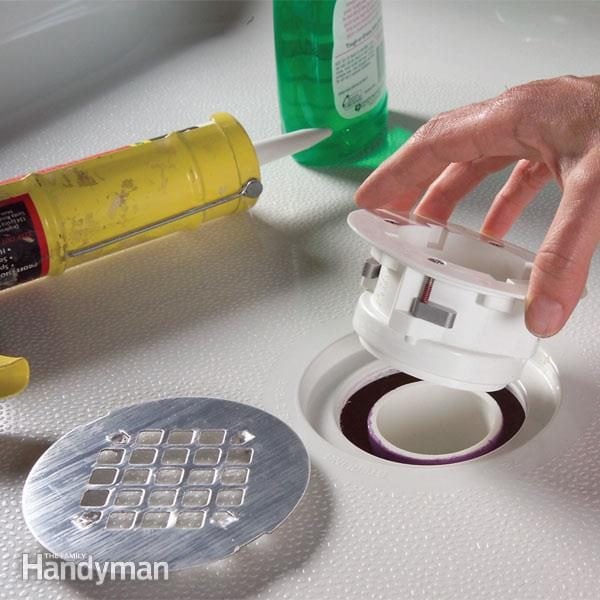Oatey No Caulk Shower Drain Installation Instructions
The configuration your instructions describe is called a 'no-caulk' drain; it is quite common and quite effective. It makes installation really easy. Basically, the 2' PVC from the trap extends upward into the drain hole of the shower base.


I believe it is generally supposed to extend up 2' from the bottom of the drain cup/mold in the shower base, and it has to be centered in the hole. Athtek Software Netwalk Enterprise Edition V2.2.54 Incl Crack [tordigger]. Then, you just push the black rubber ring/gasket down around the pipe, and it seals it really well. You'll need to lube the ring/gasket up with some liquid soap though, because it fits in so snug, you can't get it on if it is dry. Don't try to modify anything such as putting on a reducer, etc.
More Oatey No Caulk Shower Drain Installation Instructions videos. Jun 02, 2016 This video details the steps to install an oatey two-part PVC solvent weld shower drain. It also applies to 42047 and 42049 drains.
Dolby Audio Driver Windows 10 Lenovo E431 Driver. You will just be making a lot more work for yourself and it likely won't end up working as effectively as the no-caulk setup that you are supposed to use. The configuration your instructions describe is called a 'no-caulk' drain; it is quite common and quite effective. It makes installation really easy. Basically, the 2' PVC from the trap extends upward into the drain hole of the shower base.
I believe it is generally supposed to extend up 2' from the bottom of the drain cup/mold in the shower base, and it has to be centered in the hole. Then, you just push the black rubber ring/gasket down around the pipe, and it seals it really well. You'll need to lube the ring/gasket up with some liquid soap though, because it fits in so snug, you can't get it on if it is dry. Don't try to modify anything such as putting on a reducer, etc. You will just be making a lot more work for yourself and it likely won't end up working as effectively as the no-caulk setup that you are supposed to use. X2 this guy is on the money.
The configuration your instructions describe is called a 'no-caulk' drain; it is quite common and quite effective. It makes installation really easy. Basically, the 2' PVC from the trap extends upward into the drain hole of the shower base. I believe it is generally supposed to extend up 2' from the bottom of the drain cup/mold in the shower base, and it has to be centered in the hole. Then, you just push the black rubber ring/gasket down around the pipe, and it seals it really well.
You'll need to lube the ring/gasket up with some liquid soap though, because it fits in so snug, you can't get it on if it is dry. Don't try to modify anything such as putting on a reducer, etc. You will just be making a lot more work for yourself and it likely won't end up working as effectively as the no-caulk setup that you are supposed to use. Thanks for the info, Adpanko. I guess these newer seals work wonders. I also saw the range of drains at oatey and was more comfortable with the 102 solvent weld drains rather than the 140 series no caulk drains.
Both are recommended with preformed shower bases. Qbasic Program. I don't have a problem with caulking. Just want to avoid ripping off the ceiling drywall in the room below in a couple of years to see mold and rot from a drip leak.
I think I'll just replace the entire drain assembly with the 102. Was wondering - have you seen leaks with the no caulk drains with time. Or does the rubber gasket expand and contract with change in season and stays that way for a long time ( 20-30 years) without leaking. My current cast iron p-trap with a lead ring was good for 40 years. I've installed dozens of the shower drains with the rubber dough nut.
Never had a problem. One additional install tip--Make sure the P-trap is secure so it doesn't move while you are pounding in the doughnut, I generally put a piece of wood blocking under the P-trap. I also sand a slight taper at the top of the pipe so the sharp edge doesn't grab the rubber. Thanks for the tip Mike. I checked the donut install and it fits real snug. However I am still in favor of the solvent weld drain I picked up yesterday.